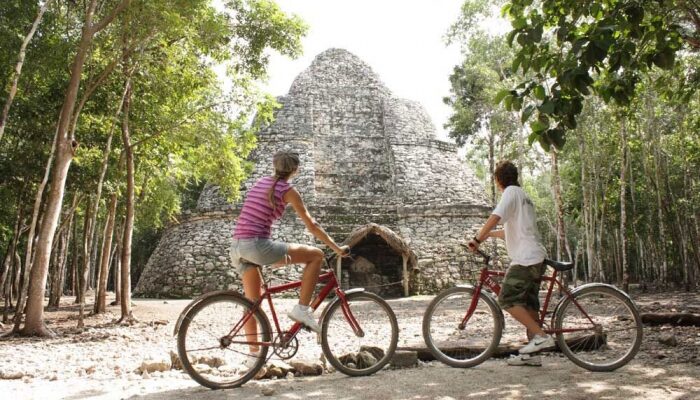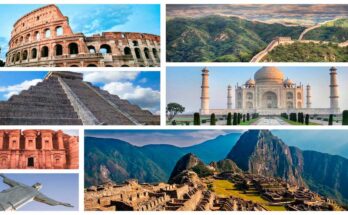The Maya city of Coba was not properly uncovered and researched until the mid 1920’s has been growing in popularity ever since and has become one of the tourist attractions of the Mayan Riviera, and today here in Traveling By we will talk about this archaeological settlement, we will talk about the Ruins of Coba.
Table of Contents
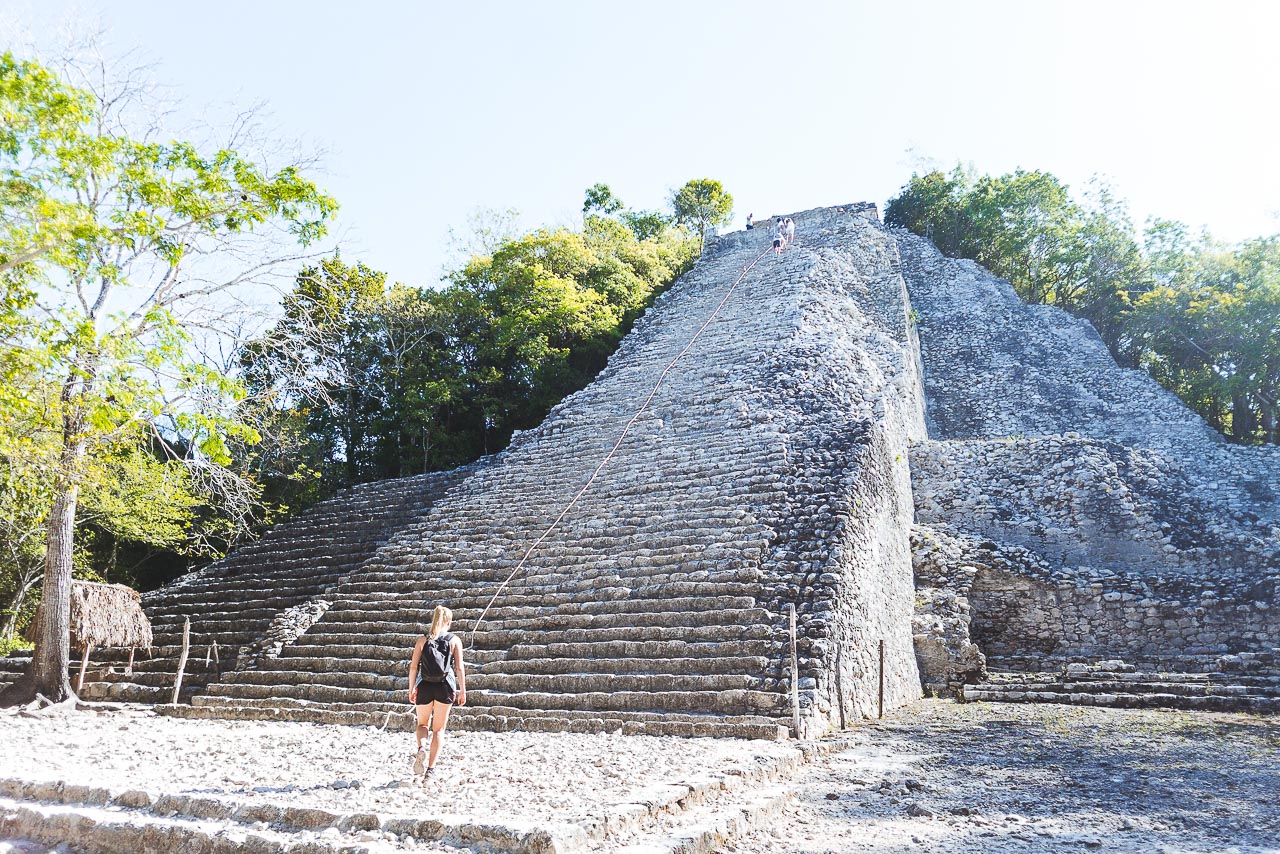
Ruins of Coba
Cobá was once a thriving metropolis, one of the largest the Mayans ever built, and estimates for its population during its hey day range from 60,000 inhabitants up to 100,000! As many as fifty roads lead out of this once great city, some leading as far away as Guatemala.
Unlike other Mayan sites Cobá is still shrouded by the surrounding jungle, estimated to have over 6,000 structures only a handful have been uncovered and are available for the public to view. The site itself is large, about two kilometers (1.25 miles) in length (but the variety of paths and routes make it much longer), and wind through the jungle following the paths the Mayans built all those years ago. Unlike other sites in the Yucatán you are allowed to climb many of the ruins; including Nohoch Mul.
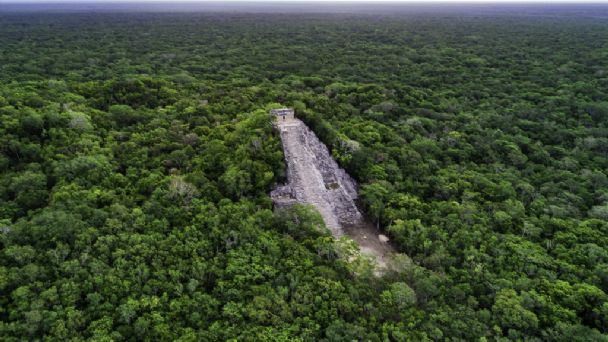
It costs $80 pesos (4 USD) to enter and it’s adequate to allow three to four hours to walk around the whole site.
Bicycles are available for rent at the cost of $100 pesos (5 USD) and you can also rent a man-with-a-bike, people who have seating for two people attached to the front of their bike and will take you to your destination; prices for these vary on where you are coming from and going to.
Regular tour guides are also available in a variety of languages and can contribute just more than architectural history to the tour; explaining to you what Mayan life was like, and painting the ruins with a brightly coloured brush. These tours vary in price depending upon how many people are in your group. Outside of the site there are souvenir shops and a good selection of restaurants.
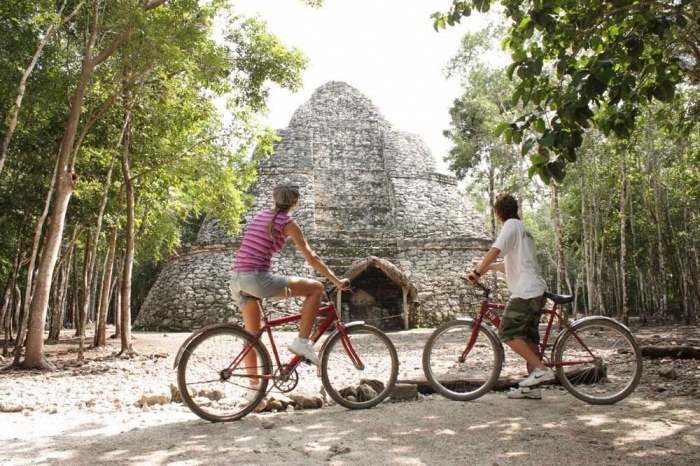
What you need:
- Good walking shoes
- Lots of water (although it can be bought here)
- Insect repellent
- Suncream
- An appetite for adventure
Sacbe
The roads that will guide you around the Cobá site are called Sacbes. Over fifty of these were built leading in and out of the city, the longest being 62miles (100 kilometers); the longest Mayan road we know of. These were built of limestone and would have taken longer to build than many of the temples you will encounter in the region.
Sacbe means “white ways”; why were they white? Even though it is evident that the Mayan people knew of the wheel, for some reason, they chose not to use it. Because of the climate of this region goods transportation was carried out throughout the cooler nights and the roads would have been lit for the couriers by the light of the moon; illuminating the white paths they were to take.
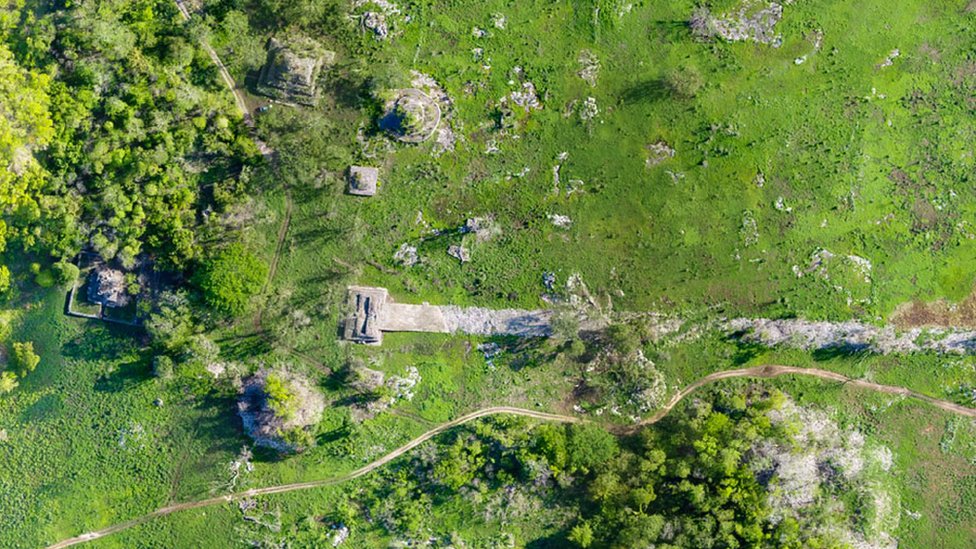
Ball courts
One of the first ruins you come to in Cobá is a ball court. Cobá actually contains two of these and they were built for the ball game Pok-Ta-Pok, a form of the game now more commonly known as the Mesoamerican ballgame.
This game has been played since 1,400BC and thus has many variations but the principal is the same and it is still played today in a few places by indigenous populations. teams usually consist of two to five players and players were only allowed to hit the ball using their hips and, on occasion, ellbows.
The balls could range in weight, sometimes weighing up to 4kg (8.8lb), the game worked on a point system and had ritual connotations; sometimes even involving human sacrifice. Although it is not clear whether it was the winning or losing team that met this fate.
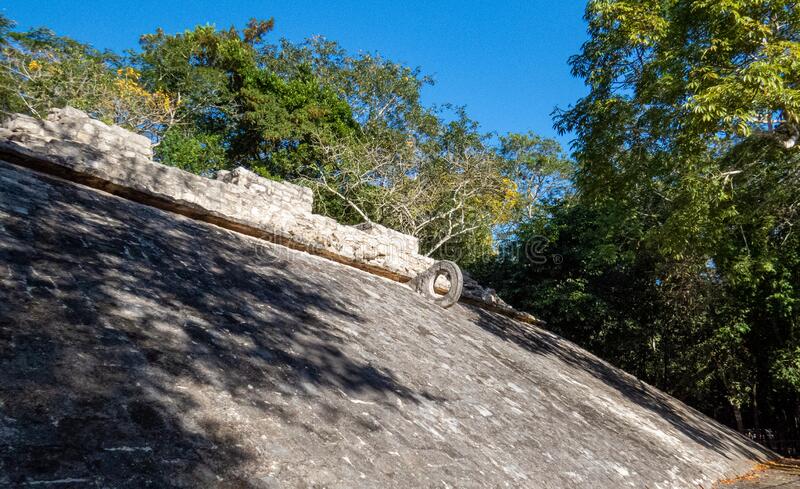
Stelae
Stelae are monuments erected, to kings and kingship. They were erected to celebrate the lives of the individuals and contain details of notable events; including marriages, and military victories.
They are also believed to have held a place in rituals and would of had a round stone alter in front of them. There are a multitude of these erected around the site of Cobá, many of which, over time, have been excessively corroded.
There are scans placed next to them to give you a better idea of what they depicted, but you can understand their importance as they are the center piece of any building they are found in.
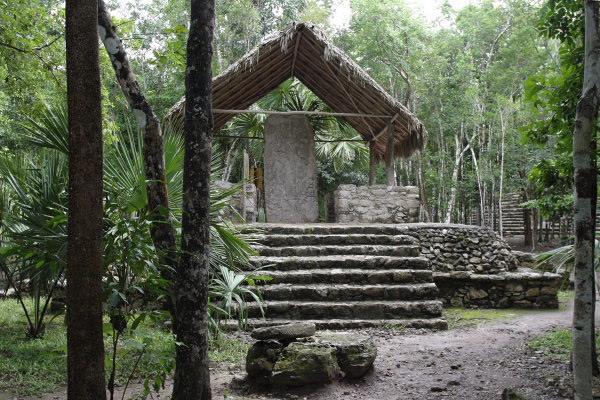
Nohoch Mul
The Pièce de résistance of the Cobá ruins site, this temple pyramid stretches 130 feet (40meters) into the sky and way above the canopy of the jungle. It was the second largest temple built by the Mayans, and the best part about it is that you can scale it yourself.
Once on top you can admire the surrounding jungle, which stretches off into the distance for miles and you can even see some, yet uncovered, Mayan Ruins poking their peaks up through the canopy.
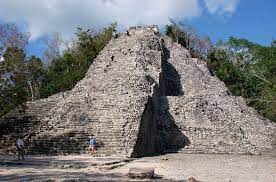
Conclusion
An amazing array of Mayan culture is on display here, being both preserved and destroyed by the surrounding jungle. There are many unbeaten but noticeable paths leading out of the site that, for the adventurous, can provide an excellent break from some of the crowds that gather and a step into the nature that surround this wonderfully historic place. Cobá is a must visit site for anyone wanting to combine a passage through history with a walk in nature.

